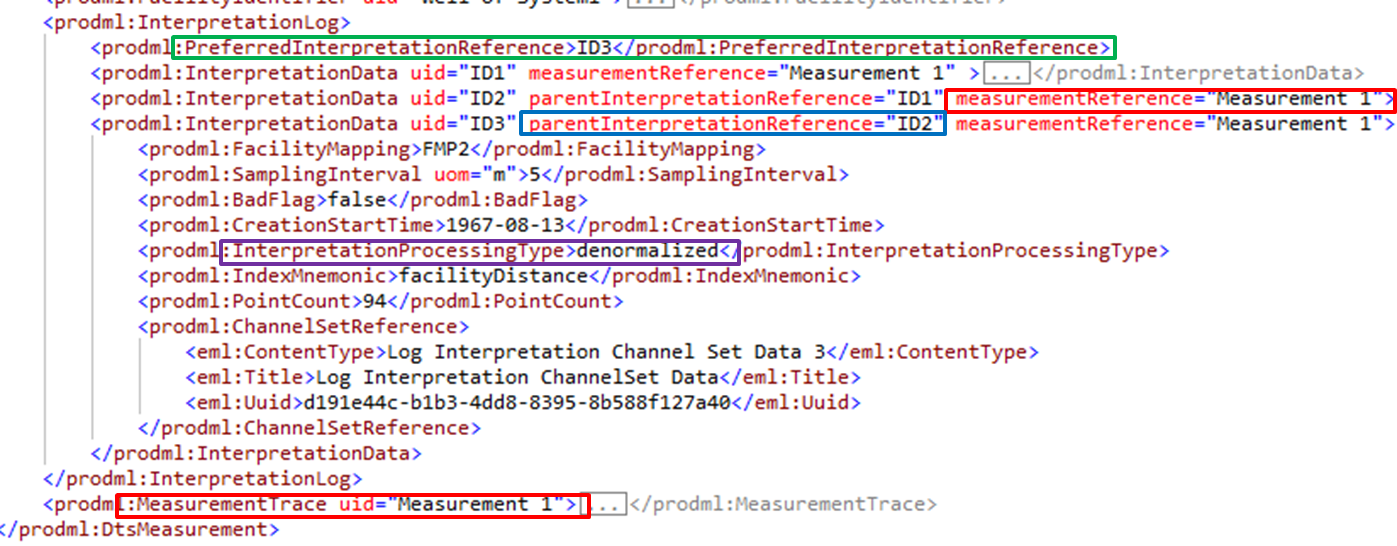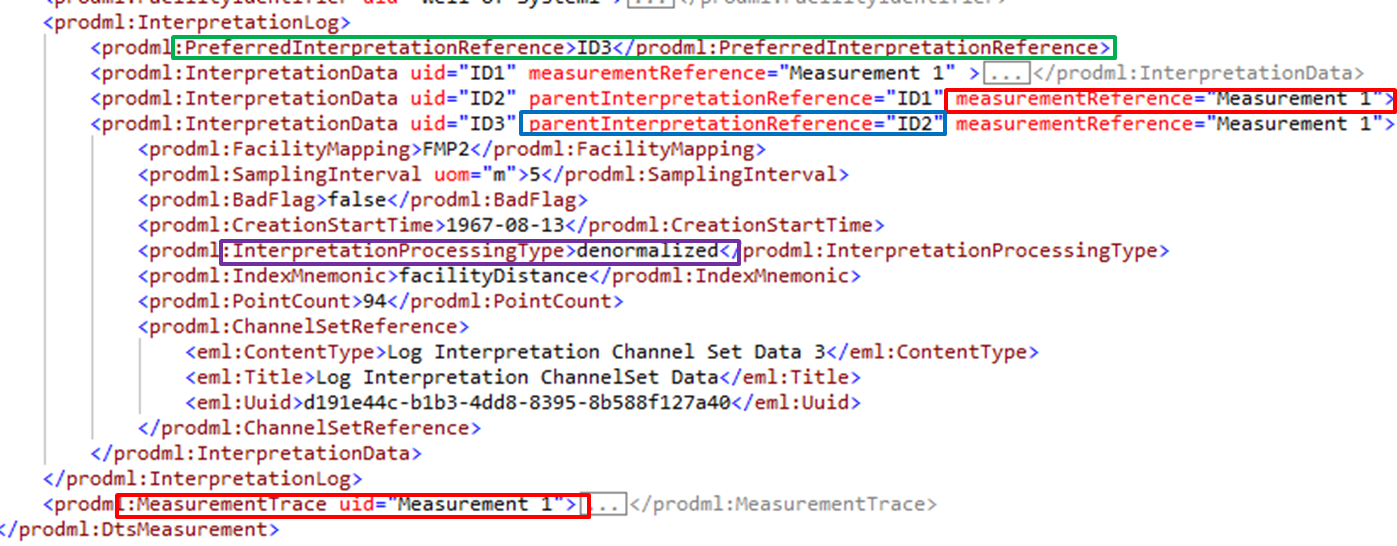15.3 Use Case 3: Manipulation of DTS-derived Temperature Log Curves
| Topic Version | 1 | Published | 12/09/2016 | |
| For Standard | PRODML v2.0 | |||
This section contains example XML that represent situations when temperature logs are modified by end-users after DTS measurements or interpretation logs have been obtained and stored in a repository. These types of modifications are common in places where additional workflows are in place that enable subject matter experts to apply different mathematical algorithms to the data (for example, de-noising the temperature values) and need to store the results for sharing with other people. When changing values of interpreted logs, it’s very important that the original log is never changed. It is also important that any modified log is also connected to the original log from which the calculations were performed (i.e., log ‘versioning’). The PRODML schema can accommodate all these scenarios.
Furthermore, there will be cases where several versions of a temperature log have been generated, but there is one version that is ‘preferred’ for use towards business decisions and deeper analysis. The PRODML schema provides a special tag that allows you to flag one of the log versions as the preferred one. See

This contains three versions of interpretation log data with its original measurement trace. The tag which identifies which is the preferred interpretation log (ID3) that should be used for business decisions is shown in a green box. All three interpretation data instances refer to the same measurement trace (red boxes). The example also shows how interpretation logs can show that they are derived from a parent interpretation log (blue box). The interpretation processing type (purple box) indicates what was processed to generate this instance. Here, ID1 was temperature shifted, ID2 took ID1 and averaged and ID3 took ID2 and denormalized. Note: in the example, all three interpretation logs point to the same Channel Set data.
